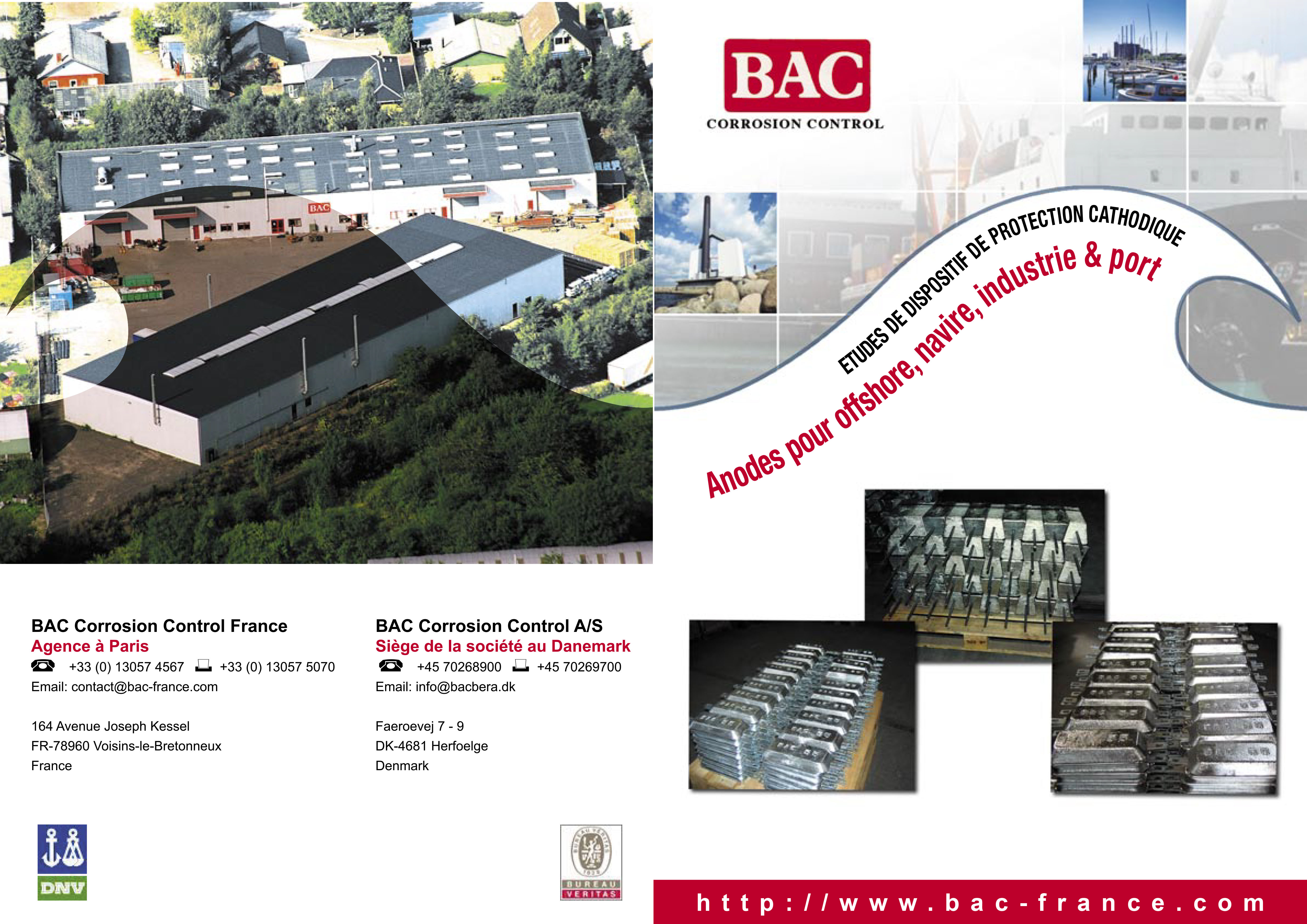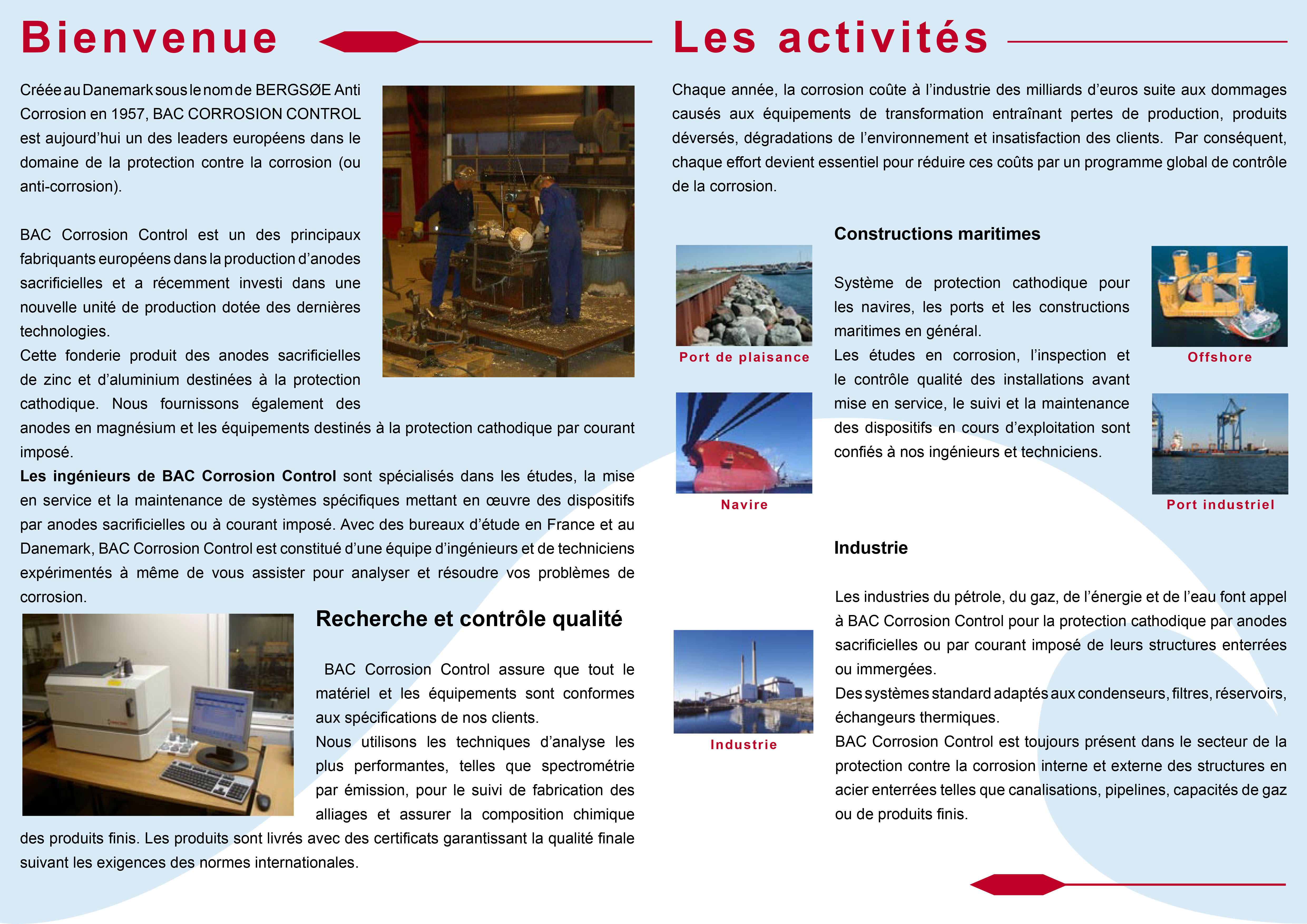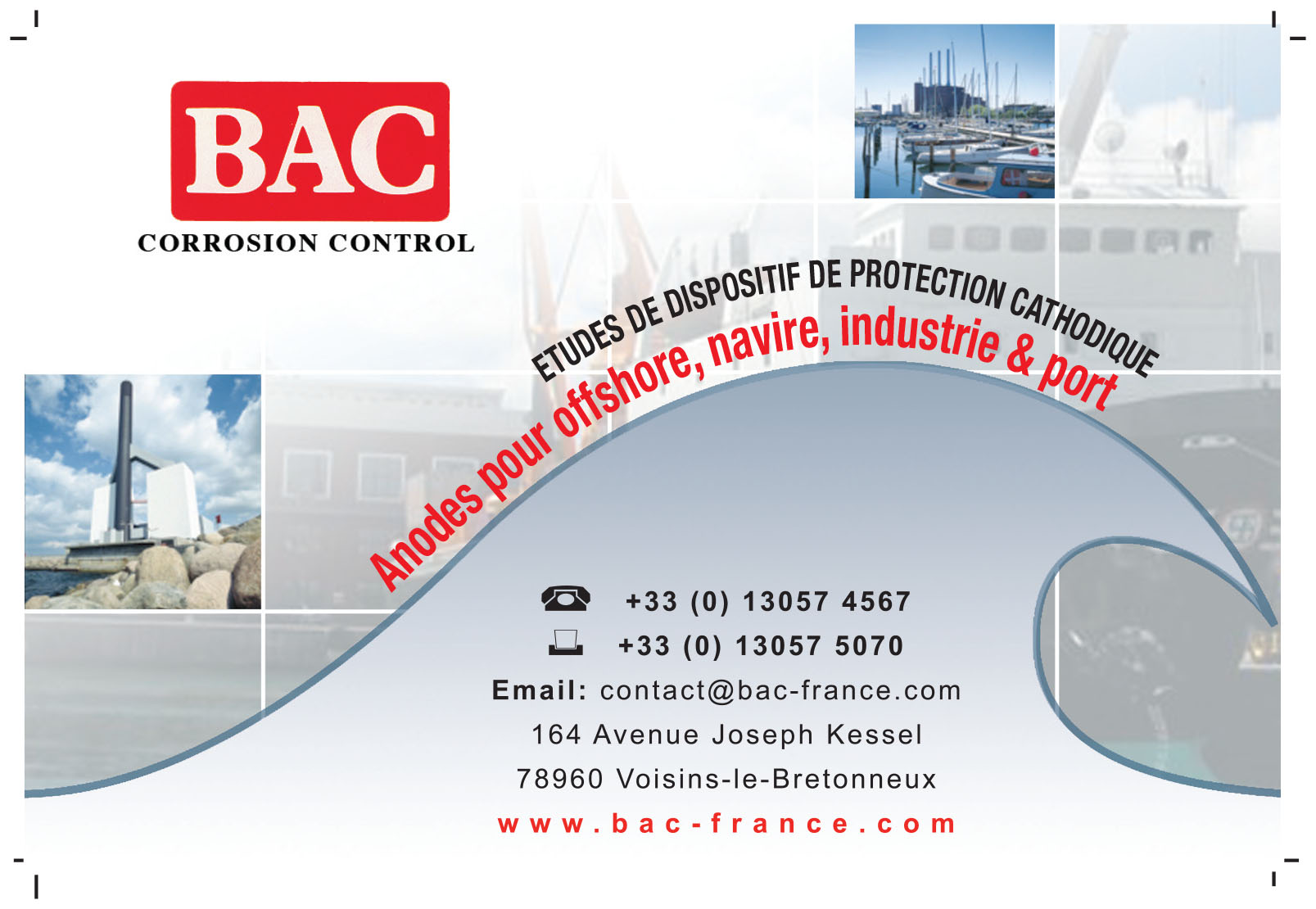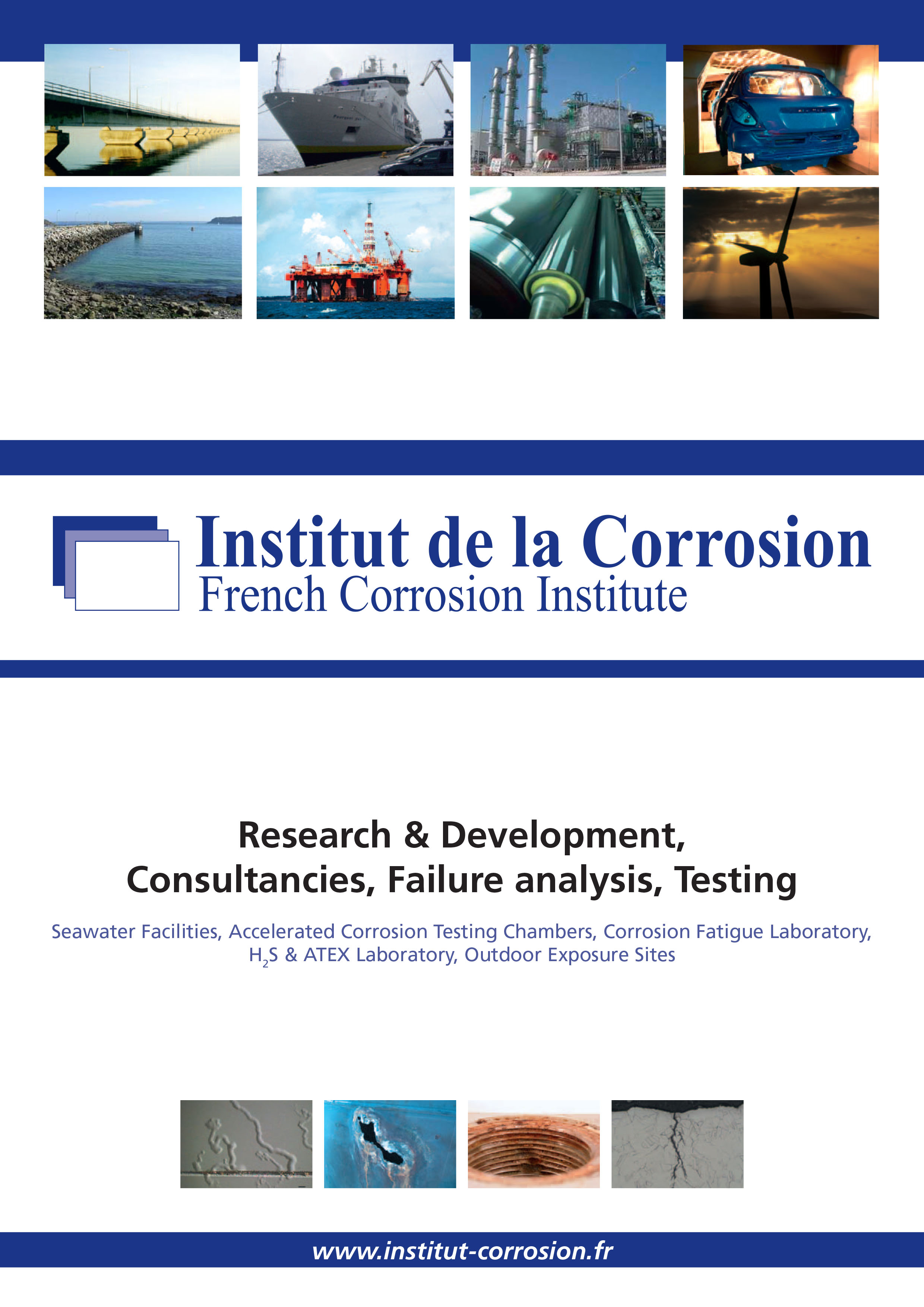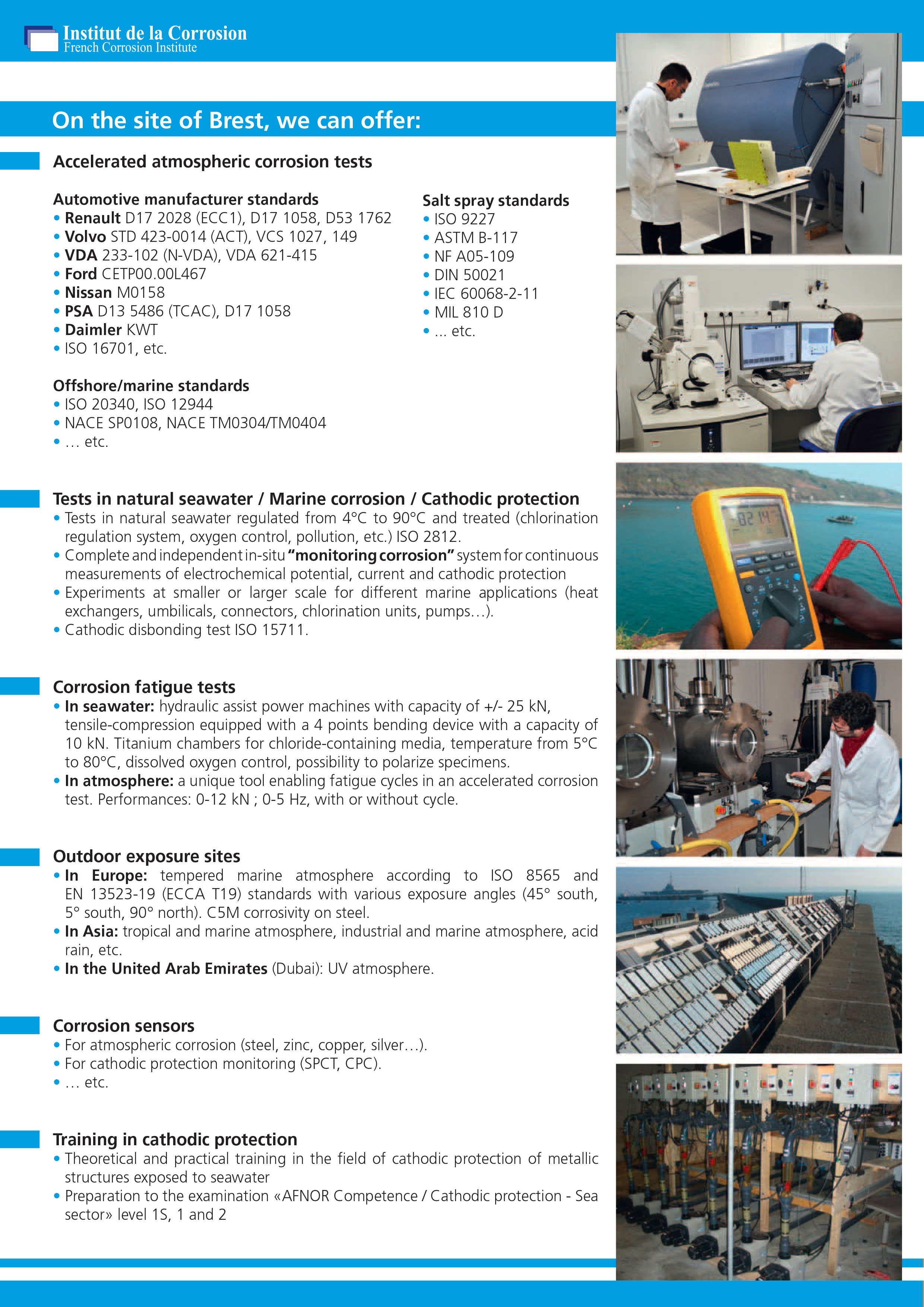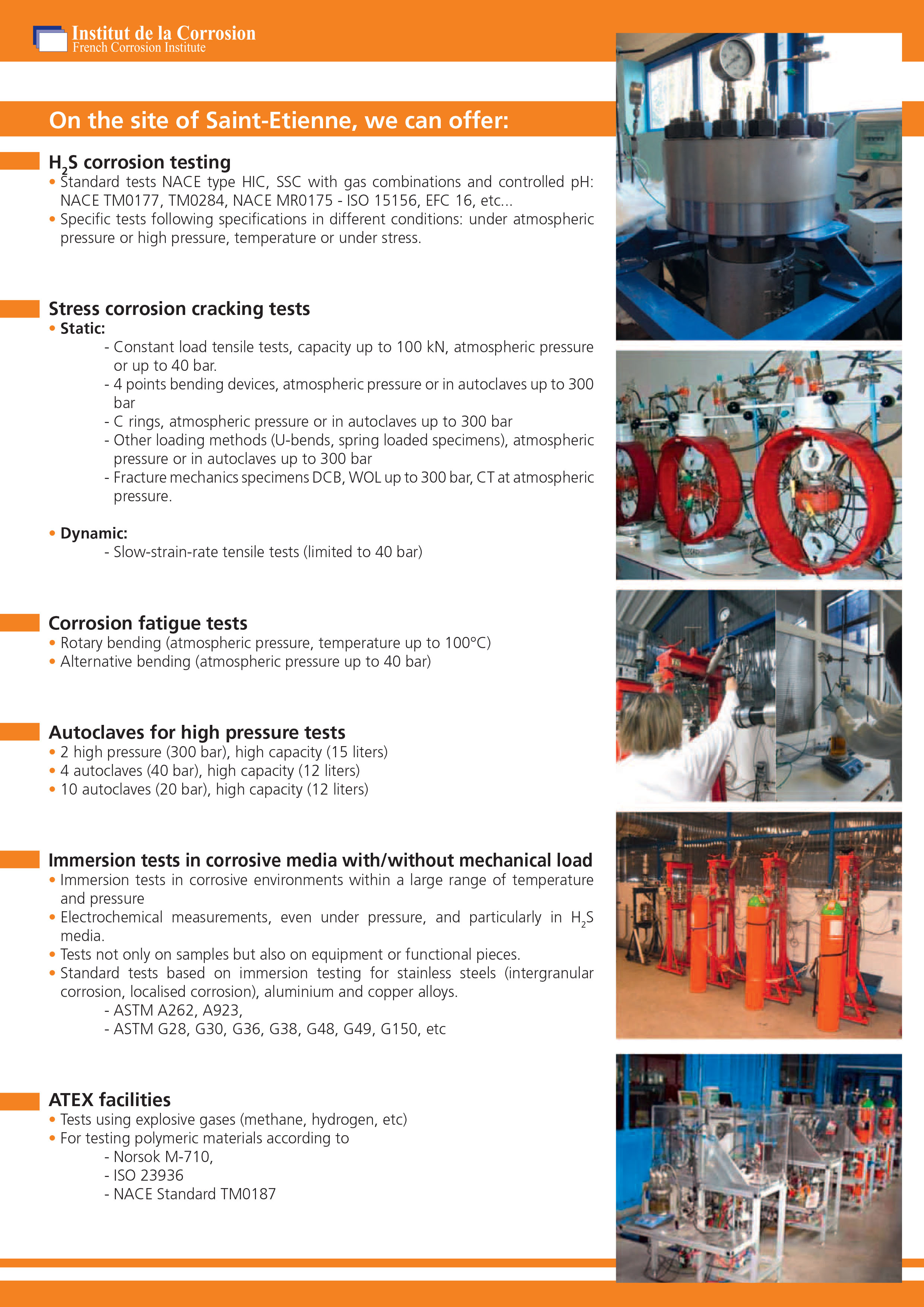When the introduction of a reference electrode is possible, the effectivenss of a cathodic protection installation is monitored by measurement of the potential of the structure with regard to a reference electrode placed in the structure. In order to eliminate the effect of the ohmic drop, this potential is preferably measured just after the protection current has been turned off.
The value of the potential to be reached depends on the structure material and on the liquid inside. It also depends on the type of reference electrode. Chart 4 gives an example of a non-alloy steel structure containing water.
Table 4: Protection potential (volt) of a non-alloy steel immersed in waters with various chloride rates
| Electrode | Hydrogen (EENH) | Silver/silver chloride in the environment EAg/AgCl | |||
|---|---|---|---|---|---|
| [Cl-]=18,9 g/l | [Cl-]=2,5 g/l | [Cl-]=0,25 g/l | [Cl-]=50 mg/l | ||
| Cold water * |
< -0,55
|
< -0,79
|
< -0,84
|
< -0,90
|
< -0,94
|
| Warm water |
< -0,65
|
< -0,89
|
< -0,94
|
< -1,00
|
< -1,04
|
| Acid water |
< -0,65
|
< -0,94
|
< -1,00
|
< -1,00
|
|
| *Cold water is neutral The rate [Cl-]=18,9 g/l comes from seawater |
|||||


